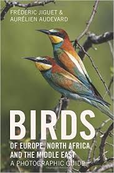 Good book, misleading title!
Good book, misleading title! 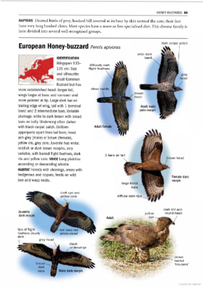 Honey Buzzard: decent, but not comprehensive, range of plumages
Honey Buzzard: decent, but not comprehensive, range of plumages 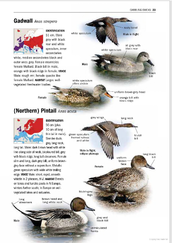 Dabbling ducks are well covered
Dabbling ducks are well covered The new guide promises the reader a creditable 2,200 photos although by encompassing so many species this means an average of only 2.5 photos per bird. In comparison, the Collins Guide, which is almost exactly the same size and with the same number of pages, has an average of 4 illustrations per species. The Wildguides book, which covers over 260 fewer species has a larger format and over a hundred more pages, manages an average of 5.4 photos per species. So although a generous provision, it is inevitable that this book shows fewer plumages and fewer birds in flight. These omissions sometimes can make a difference between identifying a bird or not; the lack of any flight shots of either merganser is but one example of this. The photos are of a good standard but some of the wildfowl look like capitive birds as they seem to be pinioned ...
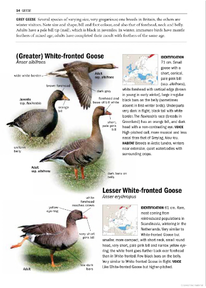 Longer wing tips are a good ID feature on Lesser Whitefront but the bird here doesn't have any! Is it a 'clipped' bird in a collection?
Longer wing tips are a good ID feature on Lesser Whitefront but the bird here doesn't have any! Is it a 'clipped' bird in a collection? After a good, albeit somewhat brief introduction, the book gets down to business with over 420 pages of photos and descriptions. Both the illustrations and text share the same page with, where appropriate, a map. The photos are well annotated with useful comments on key ID features. The photographs have been “photo-shopped” so that most background has been “tippexed” out with only a ghosted disc remaining round the bird (or part thereof). The photographs themselves are generally of a good quality although some are a little small making details hard to discern. As a general rule, the images tend to be larger than those in the Collins Guide (but 30%-50% smaller than those in Wildguides' 'Britain's Birds'). However, painted plates of birds in identical poses, without distracting shadows and carefully delineated to highlight key points mean that it can be harder to distinguish detail in photos than paintings of the same (or even smaller) size.
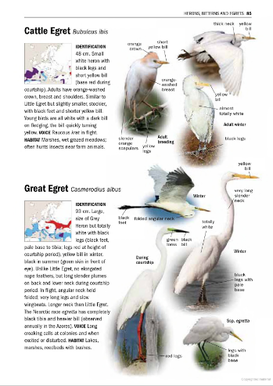 The very red legs of the Great Egret here suggest to me that the bird here belongs to the race 'modesta' of SE Asia or can European birds be this bright?
The very red legs of the Great Egret here suggest to me that the bird here belongs to the race 'modesta' of SE Asia or can European birds be this bright? More often than not two species are covered per page but quite a few are squeezed in three and a fewer still four to a page (esp. Nearctic vagrant passerines). Another sixty odd species, often (but not always) those with several distinct subspecies or a complex range of plumages have a page or more to luxuriate in. So it's not a surprise to find species with very variable plumages – buzzards, eagles, some harriers, all larger gulls, and so on have a page or more to themselves. Predictably, Yellow Wagtail comes off best with no less than three pages – generous perhaps but it's good to see those familiar green, grey or black heads attached to a body for once! Rare shrikes in the old Isabelline complex are particularly well treated. Yet such generous full page coverage is also enjoyed by far less variable species like Pheasant, Brown Booby, Starling, Waxwing and Pine Grosbeak. Whatever the criteria used to determine the space allowed for each species, the criteria seem haphazardly applied as Common Redpoll (a variable species with several races) only gets half a page. Some fairly common species too get shorter shrift than one might expect (e.g. one photo of Woodcock compared to two for Pin-tailed Snipe).
 The existence of 'Ambigous Reed Warbler' will come as a surprise to many!
The existence of 'Ambigous Reed Warbler' will come as a surprise to many! 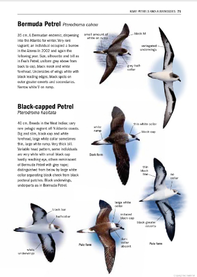 Even extreme rarities are included.
Even extreme rarities are included. 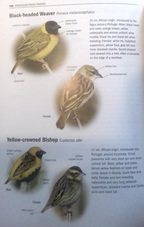 Good news for Iberian birders!
Good news for Iberian birders! 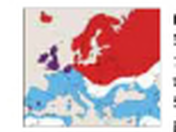 The status of Pintail in the UK is hopelessly exaggerated on this map
The status of Pintail in the UK is hopelessly exaggerated on this map 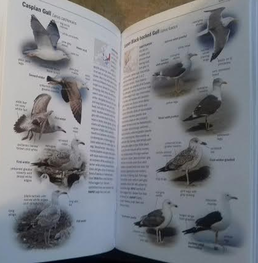 Although not showing all plumages, gulls are better covered than in many photograohic guides
Although not showing all plumages, gulls are better covered than in many photograohic guides 
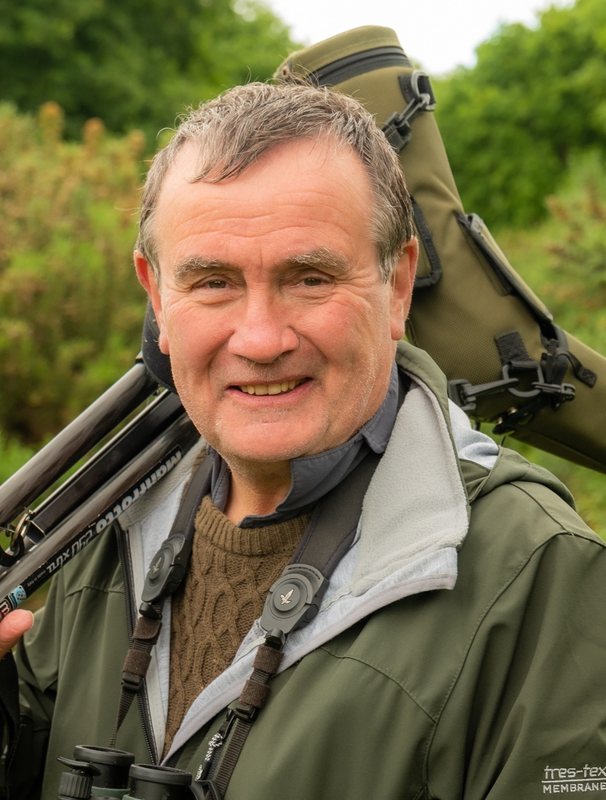
 RSS Feed
RSS Feed
